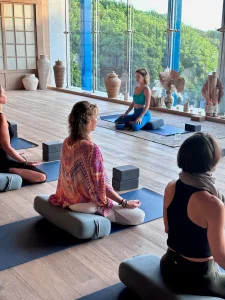The landscape of live events has certainly transformed. While the pandemic initially caused a significant downturn in attendance, recent trends suggest a resurgence of interest in theater, concerts, and sports.
With safety measures in place and the advent of hybrid events, more people feel comfortable returning to in-person experiences. Additionally, technological advancements have enhanced virtual participation, allowing those who are still cautious or unable to attend physically to enjoy events from the comfort of their homes.
A sense of community and shared experience, which many missed during the height of the pandemic, has drawn audiences back. Theaters are now seeing sold-out shows, and concert venues are buzzing with energy once again. It’s clear that the human desire for connection, a sense of community and entertainment remains strong. Organizers have adapted, ensuring that the magic of live events can be enjoyed safely and inclusively, paving the way for a vibrant and dynamic future.
Audiences are gradually returning to theaters, concert halls, and other live venues, but the landscape has undeniably shifted. Initially, there was a palpable sense of excitement and renewal as people eagerly embraced the opportunity to experience live performances once more. However, the pandemic has also left a lasting impact on audience behavior and expectations.
Many venues have implemented enhanced safety measures, such as improved ventilation systems, regular sanitization procedures, and options for socially distanced seating. Additionally, the rise of virtual events during the shutdown has created a new hybrid model, where audiences can choose between attending in person or streaming performances from the comfort of their homes.
Artists and event organizers have had to adapt creatively, offering unique experiences to entice audiences back. Some have introduced interactive elements, exclusive behind-the-scenes content, and smaller, more intimate shows. The sense of community and shared experience that live performances foster is something that virtual events struggle to replicate, and this has driven many to return to physical venues.
“The crucial question is: what steps are being taken to navigate out of the pandemic in a more innovative and sustainable manner,” Arianne Traverso, co-CEO of The Yoga Expo, Founder of Ariise.io Business Hub Software, and The Evolved Digital CEO coaching program said in an interview with Holistic Wander earlier this year. We connected with her to discover the imaginative and inventive strategies that events nationwide have adopted to tackle challenges such as reduced budgets, accessibility, and audience retention.

“One of the major shifts we’ve seen is the integration of hybrid events,” Traverso explained. “By offering both in-person and virtual attendance options, we can reach a wider audience and accommodate those who may still feel hesitant about attending large gatherings. This model not only expands our reach but also allows us to collect valuable data on attendee preferences and behaviors.”
Traverso highlighted that many event organizers have also embraced more sustainable practices. “From reducing waste to sourcing local, recycling and eco-friendly materials, there’s a growing emphasis on minimizing the environmental impact of events. This not only appeals to a more eco-conscious audience but also sets a positive example within the industry.”
Moreover, technology has played a pivotal role in re-engaging audiences. “Innovative apps and platforms have been developed to enhance attendee experience, offering features like interactive Q&A sessions, real-time polling, and networking opportunities,” she said. “These tools help maintain a sense of community and engagement, even when participants are not physically present.”
Despite the challenges, Traverso remains optimistic about the future of live events. “The pandemic forced us to rethink and reimagine the way we connect with our audiences. As a result, we’ve developed more versatile and resilient strategies. It’s an exciting time for the industry, as we continue to adapt and grow.”
However, it’s also important to recognize the economic and psychological impacts of the pandemic. Some individuals may still be hesitant to gather in large groups or may prioritize different forms of entertainment. The industry continues to navigate these challenges, striving to balance safety, accessibility, and the irreplaceable magic of live performance.
The industry is also seeing a shift in demographics, with younger audiences showing a greater willingness to return to live events, often seeking out fresh and innovative performances. Meanwhile, older patrons may remain more cautious, opting for virtual experiences or smaller, less crowded venues.

Financially, the recovery has been uneven. Major cities with robust cultural scenes have seen a quicker resurgence, while smaller towns and rural areas struggle to regain pre-pandemic attendance levels. Funding and government support have played crucial roles in this recovery, with grants and subsidies helping to sustain many venues and artists during the leaner times.
In response to these challenges, some venues have embraced flexible pricing models and subscription services, making it easier for audiences to commit to attending multiple events. This not only encourages repeat attendance but also fosters a deeper connection between the audience and the local arts community.
As we wrapped up our conversation, Traverso emphasized the importance of collaboration and adaptability. “The key to moving forward is commU-N-I-T-Y, working together and being open to new ideas. By sharing our successes and learning from our challenges, we can create a more vibrant and inclusive event landscape for everyone.”
Looking ahead, the future of live performance appears to be a blend of tradition and innovation. The lessons learned during the pandemic have most definitely brought us closer together and equipped the industry with new tools and strategies to engage audiences in diverse ways. While the road to full recovery may be long and complex, the enduring appeal of live performance suggests that theaters, concert halls, trade shows and other venues will continue to be cherished spaces for communal joy, reflection, and inspiration.





